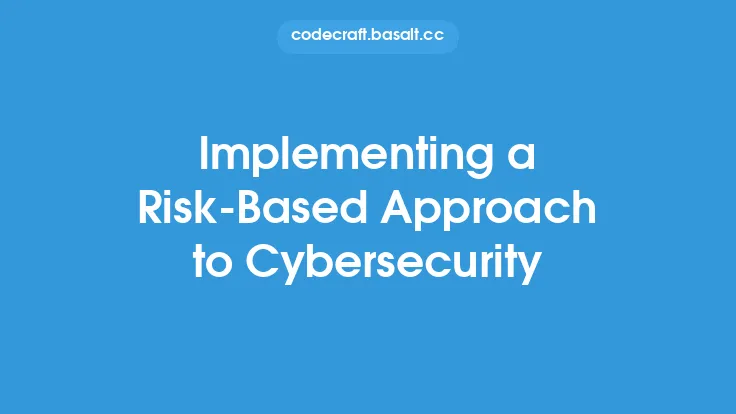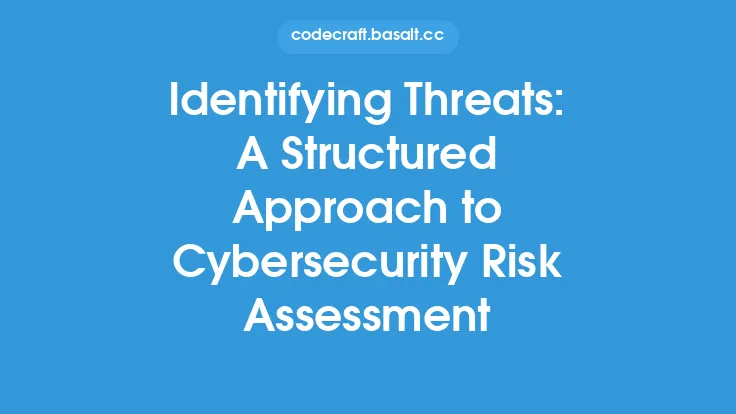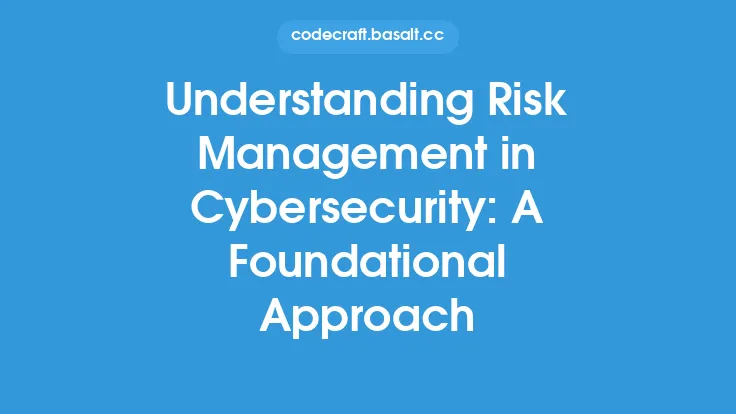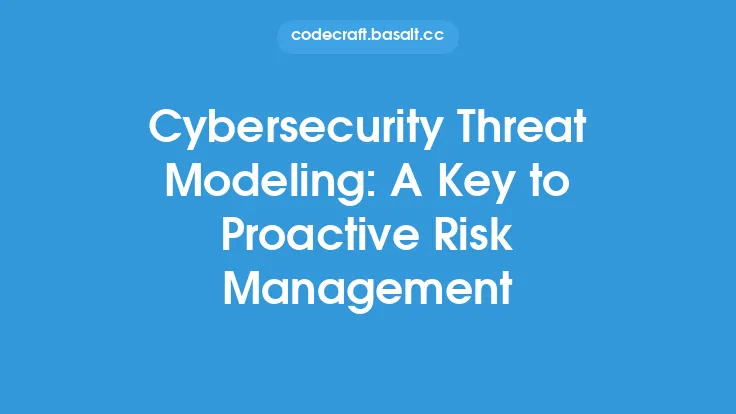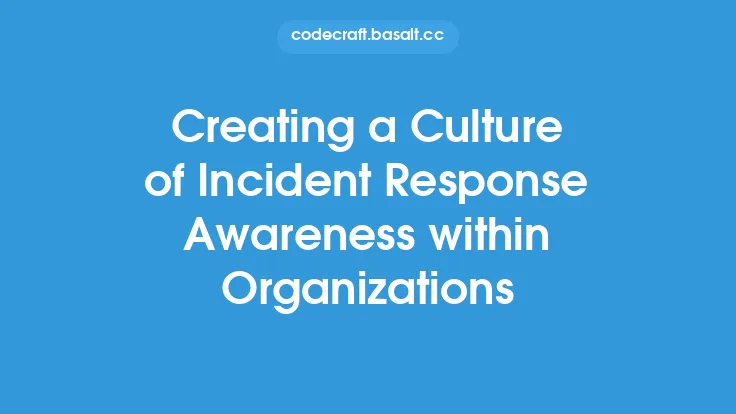Incident response is a critical component of an organization's cybersecurity posture, as it enables them to respond quickly and effectively to security incidents, minimizing the impact on their operations and reputation. A proactive approach to incident response involves having a well-planned and well-rehearsed response strategy in place, which includes procedures for detecting, containing, and eradicating threats, as well as restoring systems and data to a known good state.
Introduction to Incident Response
Incident response is a systematic process that involves identifying, analyzing, and responding to security incidents, such as data breaches, malware outbreaks, or denial-of-service (DoS) attacks. The goal of incident response is to minimize the impact of the incident, prevent further damage, and restore normal operations as quickly as possible. Incident response involves a range of activities, including incident detection, incident reporting, incident analysis, containment, eradication, recovery, and post-incident activities.
Incident Response Life Cycle
The incident response life cycle consists of several phases, including preparation, detection, containment, eradication, recovery, and post-incident activities. The preparation phase involves developing incident response plans, procedures, and playbooks, as well as conducting training and exercises to ensure that incident response teams are prepared to respond to incidents. The detection phase involves identifying potential security incidents, such as suspicious network activity or system crashes. The containment phase involves taking steps to prevent the incident from spreading, such as isolating affected systems or blocking malicious traffic. The eradication phase involves removing the root cause of the incident, such as deleting malware or patching vulnerabilities. The recovery phase involves restoring systems and data to a known good state, and the post-incident activities phase involves conducting a post-incident review to identify lessons learned and areas for improvement.
Incident Response Strategies
There are several incident response strategies that organizations can use to respond to security incidents, including the NIST Cybersecurity Framework, the SANS Institute's Incident Response Framework, and the ISO 27001 standard. The NIST Cybersecurity Framework provides a structured approach to incident response, including identify, protect, detect, respond, and recover. The SANS Institute's Incident Response Framework provides a more detailed approach to incident response, including incident handling, incident containment, and incident eradication. The ISO 27001 standard provides a comprehensive approach to incident response, including incident management, incident response, and incident reporting.
Incident Response Tools and Technologies
There are several incident response tools and technologies that organizations can use to support their incident response efforts, including security information and event management (SIEM) systems, incident response platforms, and threat intelligence platforms. SIEM systems provide real-time monitoring and analysis of security-related data, allowing organizations to quickly identify and respond to security incidents. Incident response platforms provide a centralized platform for managing incident response activities, including incident reporting, incident analysis, and incident response. Threat intelligence platforms provide real-time threat intelligence, allowing organizations to stay ahead of emerging threats and respond quickly to security incidents.
Incident Response and Continuous Monitoring
Continuous monitoring is a critical component of incident response, as it enables organizations to quickly identify and respond to security incidents. Continuous monitoring involves real-time monitoring of security-related data, including network traffic, system logs, and application data. This allows organizations to quickly identify potential security incidents, such as suspicious network activity or system crashes, and respond quickly to minimize the impact of the incident. Continuous monitoring also involves regular vulnerability assessments and penetration testing, which helps to identify vulnerabilities and weaknesses in systems and applications, allowing organizations to take proactive steps to prevent security incidents.
Incident Response and Threat Intelligence
Threat intelligence is a critical component of incident response, as it enables organizations to stay ahead of emerging threats and respond quickly to security incidents. Threat intelligence involves collecting, analyzing, and disseminating information about potential security threats, including malware, phishing attacks, and denial-of-service (DoS) attacks. This allows organizations to quickly identify potential security incidents and respond quickly to minimize the impact of the incident. Threat intelligence also involves analyzing threat actor tactics, techniques, and procedures (TTPs), which helps organizations to understand the motivations and goals of threat actors, allowing them to take proactive steps to prevent security incidents.
Incident Response and Cloud Security
Cloud security is a critical component of incident response, as it enables organizations to quickly identify and respond to security incidents in cloud-based systems and applications. Cloud security involves securing cloud-based infrastructure, including virtual machines, storage, and networking. This includes implementing cloud security controls, such as firewalls, intrusion detection systems, and encryption, as well as conducting regular vulnerability assessments and penetration testing. Cloud security also involves monitoring cloud-based systems and applications for potential security incidents, such as suspicious network activity or system crashes, and responding quickly to minimize the impact of the incident.
Incident Response and Artificial Intelligence
Artificial intelligence (AI) is a critical component of incident response, as it enables organizations to quickly identify and respond to security incidents. AI involves using machine learning algorithms to analyze security-related data, including network traffic, system logs, and application data. This allows organizations to quickly identify potential security incidents, such as suspicious network activity or system crashes, and respond quickly to minimize the impact of the incident. AI also involves automating incident response activities, such as incident reporting, incident analysis, and incident response, which helps to reduce the time and effort required to respond to security incidents.
Conclusion
In conclusion, incident response is a critical component of an organization's cybersecurity posture, as it enables them to respond quickly and effectively to security incidents, minimizing the impact on their operations and reputation. A proactive approach to incident response involves having a well-planned and well-rehearsed response strategy in place, which includes procedures for detecting, containing, and eradicating threats, as well as restoring systems and data to a known good state. By using incident response tools and technologies, such as SIEM systems, incident response platforms, and threat intelligence platforms, organizations can quickly identify and respond to security incidents, minimizing the impact of the incident. Additionally, by incorporating continuous monitoring, threat intelligence, cloud security, and artificial intelligence into their incident response strategy, organizations can stay ahead of emerging threats and respond quickly to security incidents, minimizing the impact on their operations and reputation.
